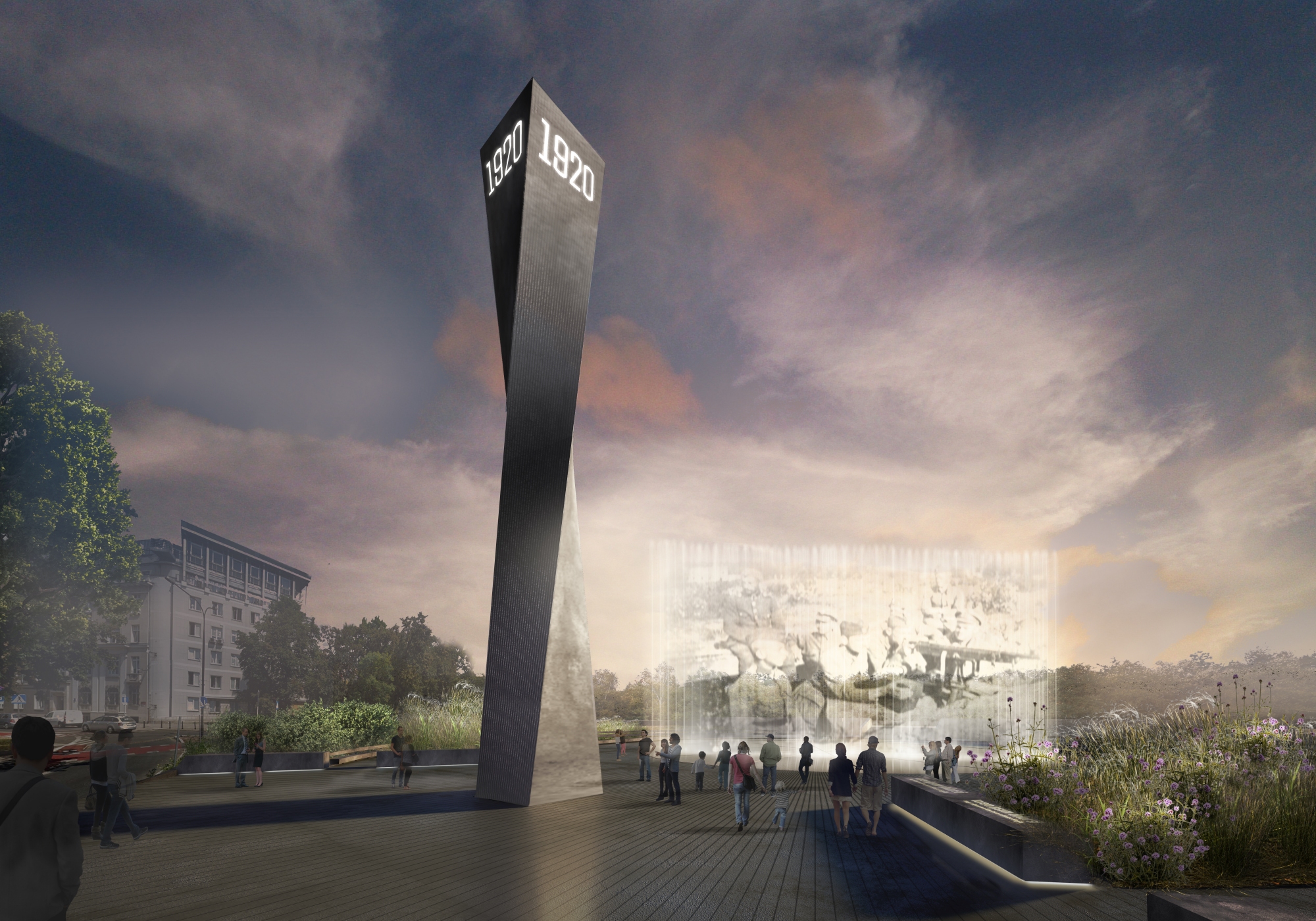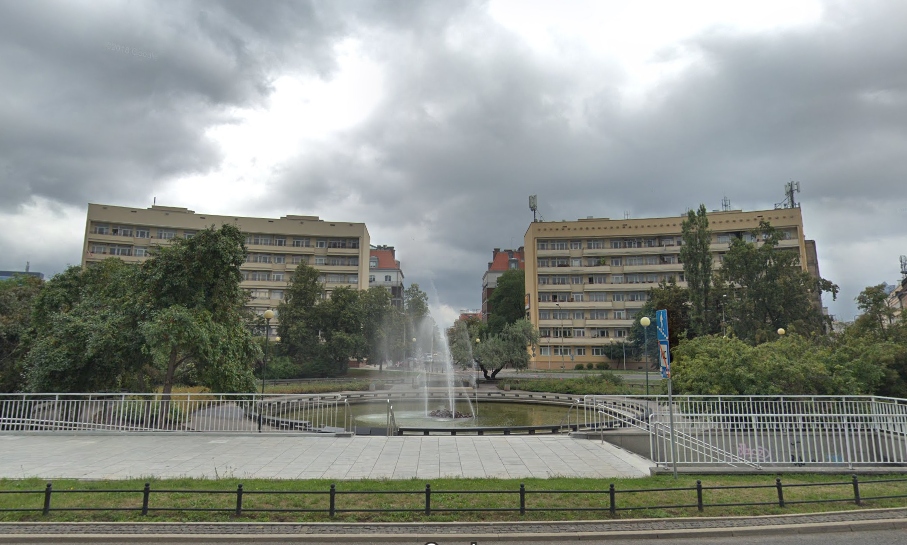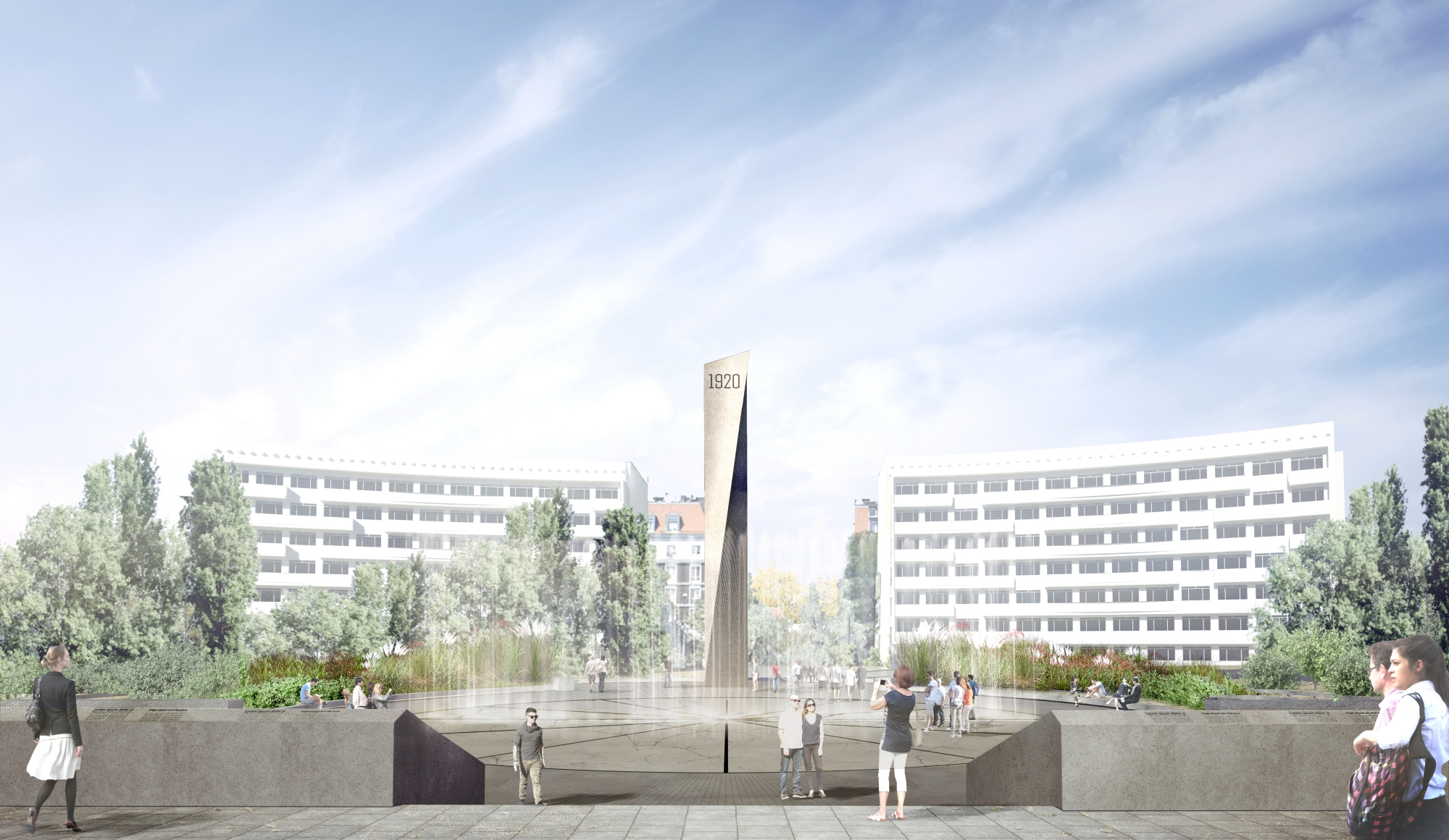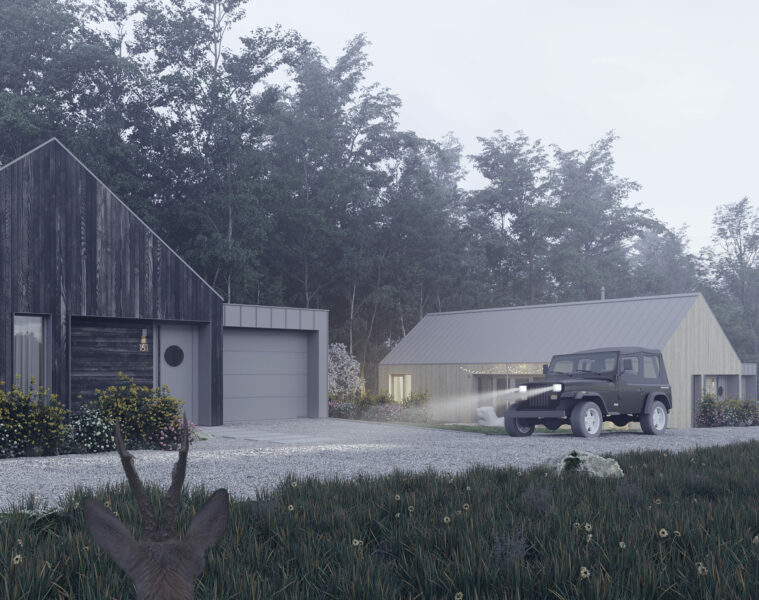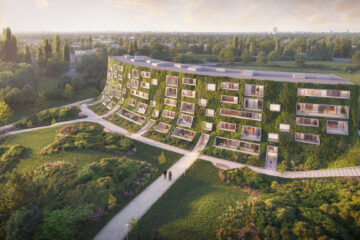The 1920 Battle of Warsaw monument was supposed to be built for the 100th anniversary of the Battle of Warsaw, three years ago. Unfortunately, not even a shovel has been driven into the square to date. A neglected square in such a prestigious part of the capital is simply shameful. There is, however, light at the end of the tunnel. The project has a building permit issued by the city. Two bids have also been received. The investor, which is the ‘Niepodległa’ office founded by the previous Minister of Culture, Professor Piotr Gliński, has announced that the 1920 Warsaw Battle Monument will be built in 2025, i.e. on the 105th anniversary of the victorious battle.
The Monument to the Battle of Warsaw – from the beginning
In February 2020, the Warsaw authorities announced the results of the competition for the conceptual design of the monument to the Battle of Warsaw 1920. Of the 58 projects submitted, the jury considered the concept prepared by Mirosław Nizio of the Nizio Design International studio to be the best.
The architectural and sculptural competition for the conceptual design of the monument to the Battle of Warsaw 1920 was announced in December 2019 by the Office of the Capital Conservator of Monuments. Fifty-eight projects took part. Let us recall some of them:
- the proposal by the MJZ Architekci studio can be seen HERE
- the proposal by M.O.C. Architects can be found HERE
This is what the winning design by the Nizio International studio looks like
The monument to the Battle of Warsaw 1920 has a form reminiscent of the hand of a sundial. The 23-metre high sculpture is to be submerged in greenery and surrounded by a fountain. Mirosław Nizio’s studio interpreted the form in such a way that the anticlockwise rotation of the block is a symbol of the reversal of the course of history thanks to the deeds and courage of the Polish people, and of victory over the insurmountable forces of time and history. The urban framework for the monument is formed by two modernist blocks lying on the Stanislawowska Axis in conjunction with the star-shaped layout of the Plac na Rozdrożu. The shape of the monument makes it appear to be stopped in motion.
It is as if it were set in motion by two opposing forces, which can be understood as East and West, darkness and light,” reads the description of the monument’s design.
There are more contrasts here. The monumental sculpture consists of juxtaposed elements with two types of texture: a darker and rougher one, which dominates the lower part. The second, upper part is a fragment with a lighter and smoother form. The symbolic juxtaposition of the two planes gives an impression of dynamism.
Right next to it, a fountain is to be built in the form of a circle, which is crossed by 12 lines. This number refers directly to the calendar cycle and the passing of time. It is also intended as a symbol of harmony, completeness and unity. This treatment is also a reference to the pan-European aspect of the Battle of Warsaw, as an event that changed the course of history. The water present throughout is living matter and a creative factor. It is also a reference to the symbolism of Polish rivers, including the Vistula, which in 1920 formed a key defensive line, allowing the counter-offensive to be launched.
The prepared project envisages the creation of a place that will be free of architectural barriers. The area is also to have a recreational function. Varsovians and tourists will be able here not only to remember the heroic feat of Poles a century ago, but also to simply relax while enjoying freedom. The project envisages the possibility of displaying multimedia shows and projections on the fountain’s water screen. The concept also provides for the introduction of small architecture and vegetation – the closer to the obelisk, the higher and more luxuriant the vegetation will be, blossoming and bursting with greenery at the point of contact with the monument.
The competition jury was responsible for selecting the design, comprising representatives of, among others, the City of Warsaw, the Ministry of Culture and National Heritage, the Association of Polish Architects, the Society of Polish Town Planners, architects and academics. The work of the judges was supported by the expertise of experts: Joanna Mytkowska (MSN), Hanna Wróblewska (Zachęta), Agnieszka Tarasiuk (Królikarnia), Bartek Skaldawski (NID), Jakub Lewicki (MWKZ).
Monument to the Battle of Warsaw 1920 – when will it finally be built?
Originally, the monument was to be erected on the 100th anniversary of the battle celebrated on 15 August 2020. However, construction work has not been able to start to date and the investment is already 3 years behind schedule. Currently, the cost of the project is more than PLN 23 million.
As of October this year, the investment already has a building permit. The role of investor is fulfilled by the ‘Niepodległa’ Office, a state institution established by the then Minister of Culture. On Friday, 22 December, the bids for the contractor for the construction of the monument were opened. Two proposals were submitted – the Warbud company offered over PLN 34 million, while ZAB-BUD Sp. z o.o., valued the work at just over PLN 20 million. The general contractor for the construction of the Battle of Warsaw 1920 Monument will have 24 months to complete the task. The current schedule assumes that the investment could be ready by 15 August 2025, when the 105th anniversary of the Battle of Warsaw will be celebrated.
We therefore hope that it will be possible to take all decisions related to the implementation of the investment quickly. Plac na Rozdrożu and the 1920 Battle of Warsaw Monument should be built as soon as possible.
Also read: Sculpture | Warsaw | Poland | Events | Culture | Art | Places , Squares, Parks |whiteMADon Instagram

